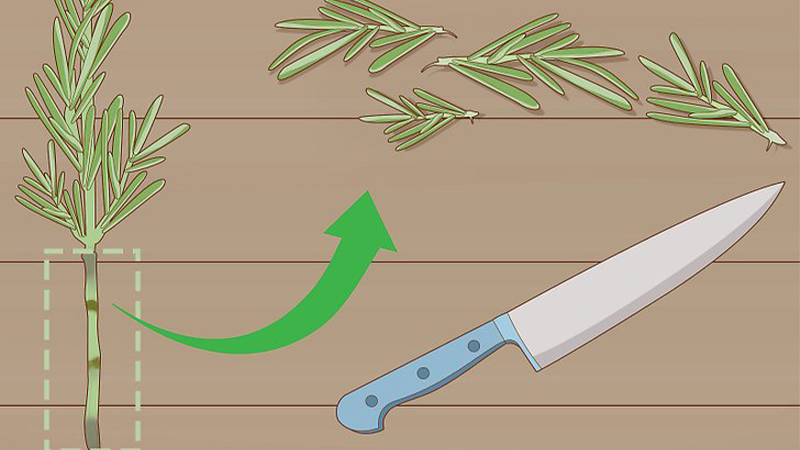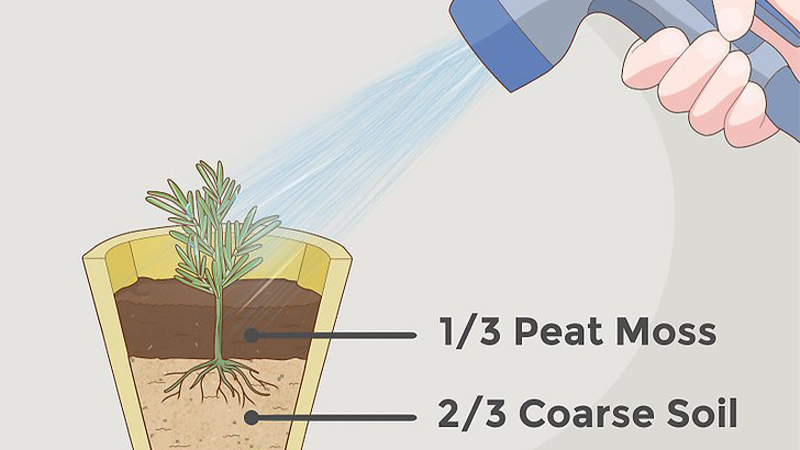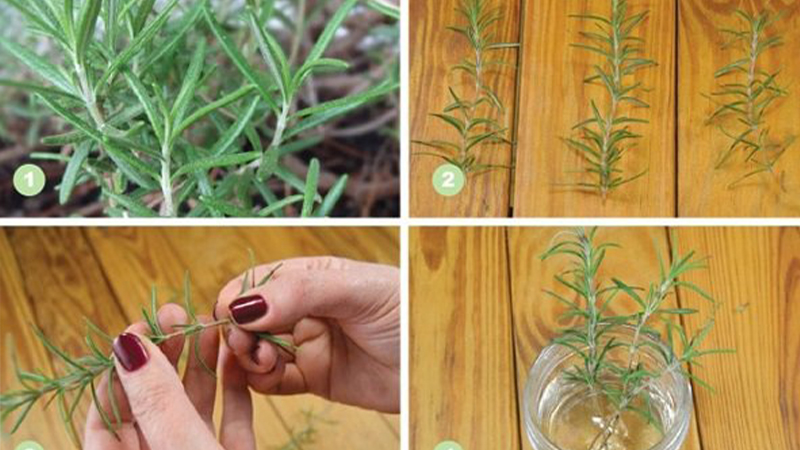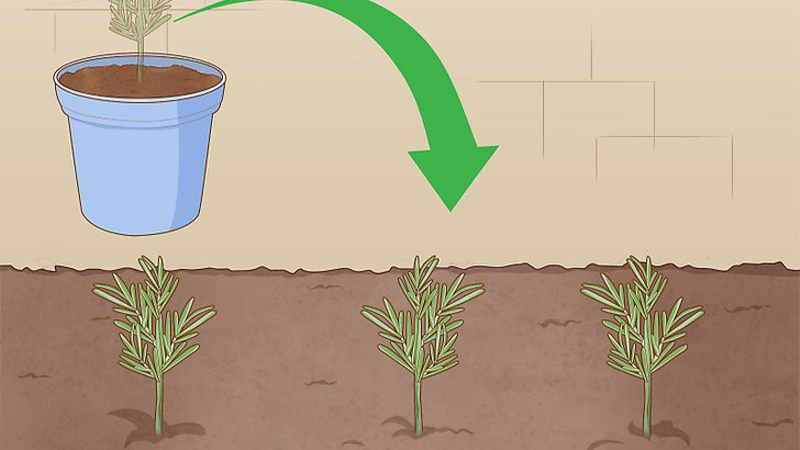Growing rosemary is usually not a challenging task, and once this woody perennial shrub takes root, it will thrive for many years. With its sweet-smelling fragrance, rosemary offers a relaxing respite from the fatigue of a long day. Let’s get started with growing rosemary following these simple steps.
1 How to Grow Rosemary
Choose Rosemary Cuttings
While you can purchase rosemary seeds from reputable garden stores like Vuon Cay Viet, some gardening experts suggest that rosemary is easier to grow from cuttings than from seeds.
Select healthy rosemary branches and cut approximately 10cm to propagate. You can find these cuttings at a nursery or ask a friend who grows rosemary. The quality of the rosemary grown from these cuttings will be similar to that of the parent bush.
 Using cuttings is an easier and faster method than growing from seeds
Using cuttings is an easier and faster method than growing from seeds
Plant the Rosemary Cuttings
Before planting your rosemary cuttings, remove the leaves from the lower part of the cutting (about 3cm). This section will be buried in the soil, and removing the leaves will prevent the cutting from rotting.
 Strip the leaves from the lower 3cm of the cutting to prevent rotting when planted in the soil
Strip the leaves from the lower 3cm of the cutting to prevent rotting when planted in the soil
Next, place the cutting into a small pot filled with a mixture of ⅔ coarse sand and ⅓ peat moss. Position the pot in a bright spot with indirect sunlight, and water daily to encourage root growth. It will take about 3 weeks for roots to develop.
Did you know:
– You can dip the cutting into a glass of water with root-stimulating powder to give it a head start before potting.
– Placing the entire pot inside a plastic bag with a few holes punched in the top can help regulate temperature and maintain warmth and moisture for the cutting.
 It takes about 3 weeks for the cuttings to develop roots
It takes about 3 weeks for the cuttings to develop roots
 You can dip the rosemary cutting into a glass of water with root-stimulating powder before potting
You can dip the rosemary cutting into a glass of water with root-stimulating powder before potting
Caring for Young Rosemary Plants
Once the roots have formed, you can transplant the rosemary into a larger pot or directly into your garden. Rosemary is highly adaptable and robust, but it thrives best in warm to hot and relatively dry climates. Choose a spot that receives full sun and has well-drained soil.
Rosemary is susceptible to root rot if the soil remains waterlogged, so ensure the planting area has good drainage. The more alkaline the soil, the more fragrant the rosemary will be. If your soil is highly acidic, mix in some lime to increase the pH level.
 Once the roots have formed, you can transplant the rosemary to your garden
Once the roots have formed, you can transplant the rosemary to your garden
2 How to Care for Rosemary Plants
Rosemary prefers dry soil, so avoid overwatering. It will flourish with just the right amount of water in the garden and particularly enjoys rainwater.
Interestingly, rosemary doesn’t require fertilizer, but if you want to boost its growth, add lime to the soil. You can prune your rosemary regularly to maintain its shape and encourage bushy growth.
Given Vietnam’s temperate climate all year round, growing rosemary is relatively straightforward in most regions.
 Rosemary is well-suited to Vietnam’s climate
Rosemary is well-suited to Vietnam’s climate






































